41 chemistry of fats and proteins worksheet answers
• A protein molecule is very large compared to molecules of sugar or salt and consists of many amino acids joined together to form long chains, similar to beads that are arranged on a string. Proteins are synthesized from DNA in a series of steps involving organelles including the nucleus, Enzyme practice worksheet answers enzyme reactions worksheet answer key and the 12 cell review worksheet answers biology are three main things we want to show you based on the post title. The letters ase at the end of words help us identify enzymes. Cell crossword cells worksheet animal teaching. Use the following terms in your answer.
A fat molecule is composed of glycerol and three fakty acids - ... Examine the chemical equation above, and then answer the following questions.14 pages

Chemistry of fats and proteins worksheet answers
Questions with Answers- Proteins & Enzymes A. A peptide with 12 amino acids has the following amino acid composition: 2 Met, 1 Tyr, 1 Trp, 2 Glu, 1 Lys, 1 Arg, 1 Thr, 1 Asn, 1 Ile, 1 Cys Reaction of the intact peptide with fluorodinitrobenzene followed by acid hydrolysis creates a • Fats and oils store energy • Phospholipids—structural role in cell membranes • Carotenoids and chlorophylls—capture light energy in plants (photoreceptor) • Steroids and modified fatty acids—hormones and vitamins • Animal fat—thermal insulation • Lipid coating around nerves provides electrical insulation Fat Chemistry Worksheet ANSWER KEY 1 Fat Chemistry Worksheet ANSWER KEY The properties of oils used in common foods can be examined through science! Fat Chemistry Worksheet Answer Key _pdf_ - Teach
Chemistry of fats and proteins worksheet answers. Cdc carbs fats and protein worksheet carbohydrates 1. Carbohydrates get broken down into what simple sugar. Some of the worksheets displayed are nutrients carbohydrates proteins and fats chapter 2 the chemistry of life work healthy and unhealthy fats go for the good chapter 8 nutrition packet biochemistry ii carbohydrates proteins lipids and ... ID: 1226905 Language: English School subject: Chemistry Grade/level: Grade 9,11 Age: 14-16 Main content: Proteins, Fats, Carbohydrates Other contents: Video about the effects of sugar on the brain Add to my workbooks (3) Download file pdf Embed in my website or blog Add to Google Classroom proteins / fats / glucose / carbohydrates / nucleic acids. Glucose is a type of carbohydrate. All the others are major types of organic molecule. glucose / starch / amino acids / fatty acids. Starch is formed from many glucose molecules while the others in the group are all the smallest subunits of carbohydrates, proteins and fats respectively. Protein Chemistry LAQ 1. Explain in detail the structural organization of proteins. 2. Classify aminoacids in various ways with suitable examples. 3. Classify proteins in various ways with suitable examples. SAQ. 1. Give the functional classification of proteins. 2. Explain the alpha-helical structure of protein with examples.
Biochemistry,Practice,Question,Answer,Key,, 1. Carbon,,Hydrogen,,Nitrogen,andOxygen, 2. Single,double,tripleorquadruplebonds , 3. Large,organic,molecules, A series of free High School Chemistry Video Lessons. In this lesson, we will learn. Proteins. Carbohydrates. Fats and Lipids. Nucleic Acid. Proteins. Proteins, also known as polypeptide chains, are macromolecules of linked amino acids. Proteins are types of organic compounds that, among other things, store energy and form enzymes. Start studying Chemistry of Fats and Proteins. Learn vocabulary, terms, and more with flashcards, games, and other study tools. In addition, registered dietitians must complete a supervised internship program and pass a national exam. Those who pursue careers in dietetics take courses in nutrition, chemistry, biochemistry, biology, microbiology, and human physiology. Dietitians must become experts in the chemistry and functions of food (proteins, carbohydrates, and fats).
Connected to chemistry of fats and proteins lab answer key, Often times, the interviewer may perhaps check with by far the most problematic thoughts, which throw the interviewee off stability and acquire him nervous. Then again, discovering about…. Interview query and responses between an interviewer and an interviewee is actually a rather ... CHEMISTRY OF LIPIDS Lipids are naturally occurring compounds, relatively insoluble in ... Fat is also called as triglyceride or Fat is also called as triglyceride or triacylglyceroltriacylglycerol. ... surrounded by a shell of proteins (also called as Apo proteins), phospholipid and free cholesterol. Fats Fats are a sub-group of compounds known as lipids that are found in the body and have the general property of being hydrophobic (meaning they are insoluble in water). Fats are also known as triglycerides, molecules made from the combination of one molecule of glycerol with three fatty acids, as depicted at the right: Proteins molecules of Life Worksheet ... Differences in R-groups give different proteins different chemical properties ... Most lipids are made of fatty acids acids.2 pages
FACS Stands For FUN. 4. $1.00. Word Document File. Students follow along with this worksheet to find out how many grams of carbohydrates, protein, and fat they should be eating based on their caloric need.Students will need to use a calculator and have access to the internet to find their total caloric need.
Download File PDF Unit 4 Covalent Bonding Webquest Answer Key Fats and proteins are two of the major nutrient groups that our bodies need. This module provides an introduction to these two macronutrients. The basic chemical structure of fats as triglycerides is presented along with the purposes and types of fat. The
Procedure: To test the presence of carbohydrates, proteins, fats and oils in the given food sample, first the extract of the given foodstuff should be prepared. Dry the given foodstuff in the mortar with a pestle or by boiling with minimum quantity of water extracting with a small quantity of an organic solvent after grinding the foodstuff.
Beside that, we also come with more related ideas like vitamins and minerals worksheet, what elements make up carbohydrates and lipids symbols and molecules of life worksheet answers. We hope these Carbohydrates Fats and Proteins Worksheet photos collection can be a guide for you, give you more samples and also bring you what you want.
Getting the most out of your meals: The best meals have a balance of items from the different food groups. 1/2 the plate is covered with fruits and vegetables. 1/4 of the plate grains, 1/4 the plate protein. Drink fat-free or low-fat milk instead of soda or other sugary drinks.
GCSE worksheet on testing for carbohydrates, lipids and proteins. This activity should be done once students have a secure understanding of how to test foods for proteins, carbohydrates and fats. The simple context of urine tests helps students to understand the rationale behind wanting to test for different food groups.
Chemistry HSC syllabus ... Student worksheet ... carbohydrates into fat. In the human and animals, fats are stored in specific parts of the body called adipose tissue. Cellulose is the main structural component of plant cell walls and is the most abundant carbohydrate on earth.
saturated fat DNA 1. 9. /-cÆt starch cholesterol steroid glycogen nucleotide RNA polypeptide chain glucose unsaturated fatty acid Part B. Identify the specific molecule (use the above terms) from each description. Some terms may be used more than once. 17. 18. provides long-term energy storage for animals instructions for building proteins
Hydrolysis "hydro" = water "lysis" = to destroy Definition: the process of DESTROYING carbs, lipids, and proteins by the addition of water How our bodies break down the foods we eat into the monomers that make them up (only monomers can be absorbed) Animation of this process: Dehydration Synthesis-Hydrolysis Sources
Carbohydrates and fats are comprised of carbon, hydrogen and oxygen. Proteins are composed of a chain of amino acids. Amino acids are made of a central carbon bonded to 4 different groups: a carboxyl group (–COOH), an amine group (–NH2), a hydrogen atom (–H), and a side group that varies depending on the type of amino acid.
Lesson Worksheet: The Chemistry of Food. In this worksheet, we will practice describing how to carry out chemical tests on food to determine the presence of sugars, starch, protein, and fats. A sample is tested with iodine.
In addition, registered dietitians must complete a supervised internship program and pass a national exam. Those who pursue careers in dietetics take courses in nutrition, chemistry, biochemistry, biology, microbiology, and human physiology. Dietitians must become experts in the chemistry and functions of food (proteins, carbohydrates, and fats).
Apr 26, 2018 — Answer Key fats chemistry and identification answer key spwmo org. chemistry of fats and proteins worksheet answers.
Background. The behavior of soaps and hand sanitizers is an application of the principle "like dissolves like." Polar molecules such as alcohols contain certain functional groups (-OH in the case of alcohol) that are attracted to water, forming strong intermolecular interactions.In contrast, nonpolar molecules such as oils and biomolecules (ex: fats, proteins) are composed of hydrocarbon ...
Alcohol found in lipids. Monomer of proteins. TA lipid containing 1 double bond between the carbon atoms. J. NH2. S. C. In the answer space for each ...
relationship between a diet high in saturated fats and atherosclerosis? Explain. Saturated Unsaturated Atherosclerosis is a disease that is associated with:_____ 30. The following questions can be answered using your book. Read the section on amino acids and proteins.
Lipids fats,oils carbon,hydrogen,oxy-gen stores energy, forms cellmembranes,carries messages Proteins enzymes,antibodies carbon,hydrogen,oxy-gen,nitrogen,sulfur helps cells keep their shape, makesupmus-cles,speedsupchemical reactions, carries mes-sagesandmaterials NucleicAcids DNA,RNA carbon,hydrogen,oxy-gen,nitrogen,phospho-rus ...
The Six Nutrients Student Worksheet. For Students 7th - 8th. In this health activity, learners answer ten questions based around the concept of the different types of foods like carbohydrates, proteins, and fats with an emphasis upon how they are used in the body. Get Free Access See Review.
Refer to the figure (Some Simple Chemistry) on the next page when doing this activity. ... identifying carbohydrates, lipids, proteins, and nucleic acids.8 pages
Fat Chemistry Worksheet ANSWER KEY 1 Fat Chemistry Worksheet ANSWER KEY The properties of oils used in common foods can be examined through science! Fat Chemistry Worksheet Answer Key _pdf_ - Teach
• Fats and oils store energy • Phospholipids—structural role in cell membranes • Carotenoids and chlorophylls—capture light energy in plants (photoreceptor) • Steroids and modified fatty acids—hormones and vitamins • Animal fat—thermal insulation • Lipid coating around nerves provides electrical insulation
Questions with Answers- Proteins & Enzymes A. A peptide with 12 amino acids has the following amino acid composition: 2 Met, 1 Tyr, 1 Trp, 2 Glu, 1 Lys, 1 Arg, 1 Thr, 1 Asn, 1 Ile, 1 Cys Reaction of the intact peptide with fluorodinitrobenzene followed by acid hydrolysis creates a
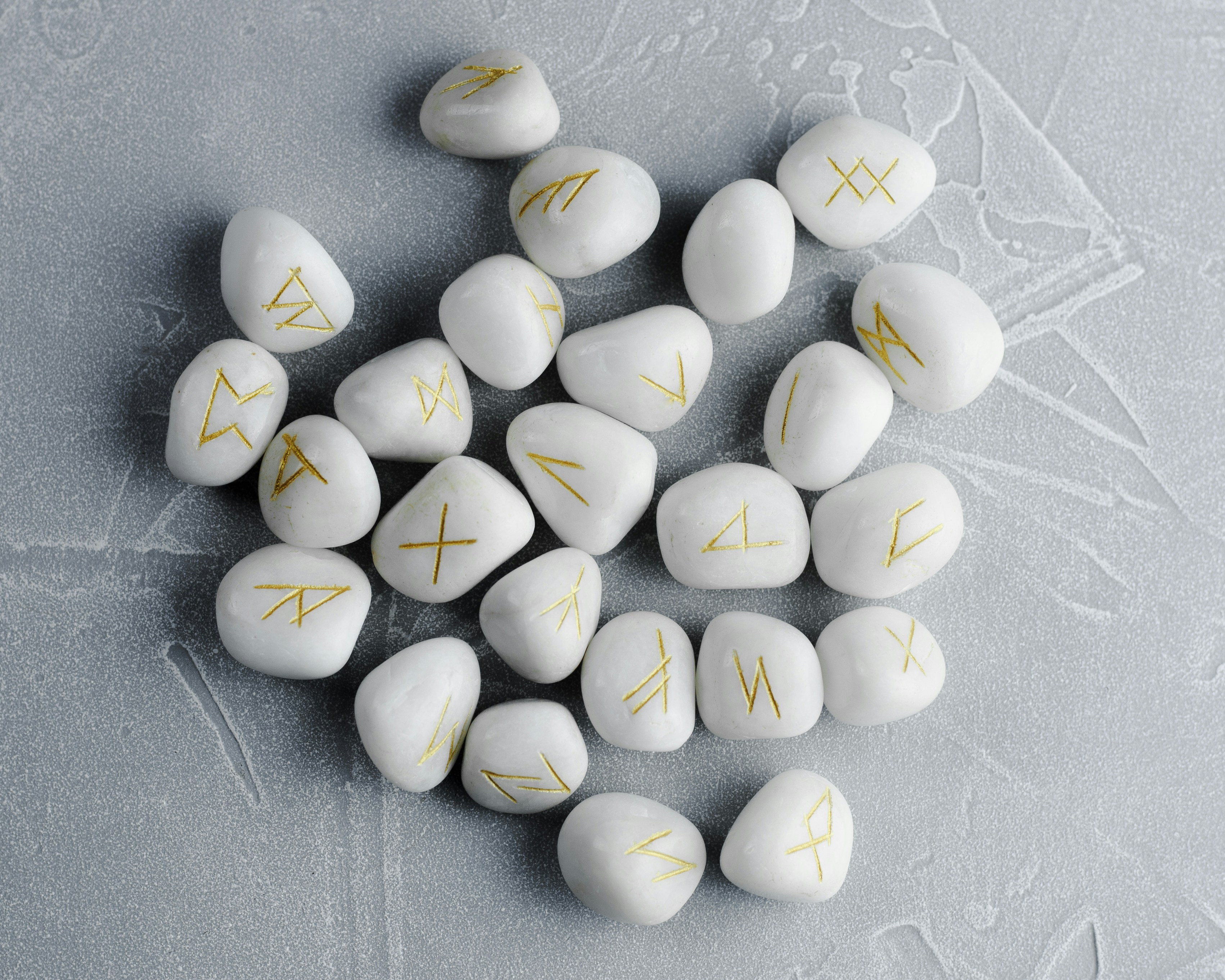



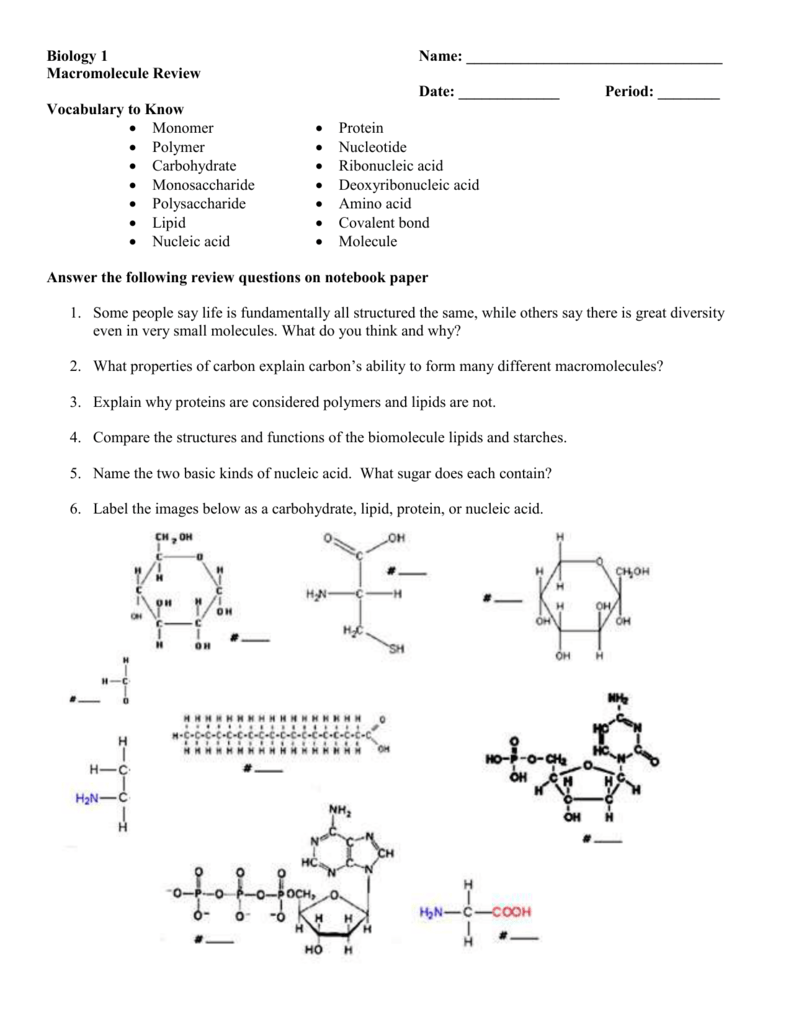


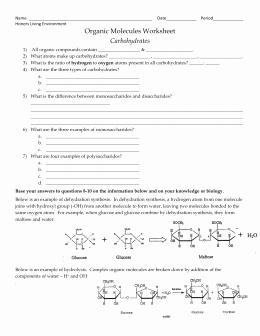

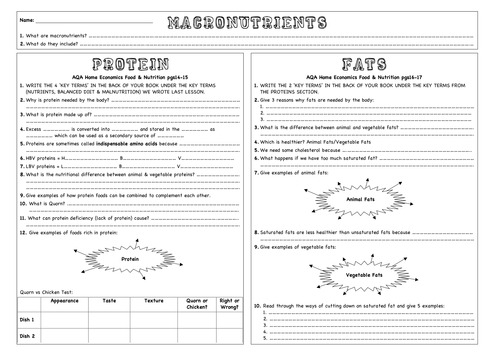

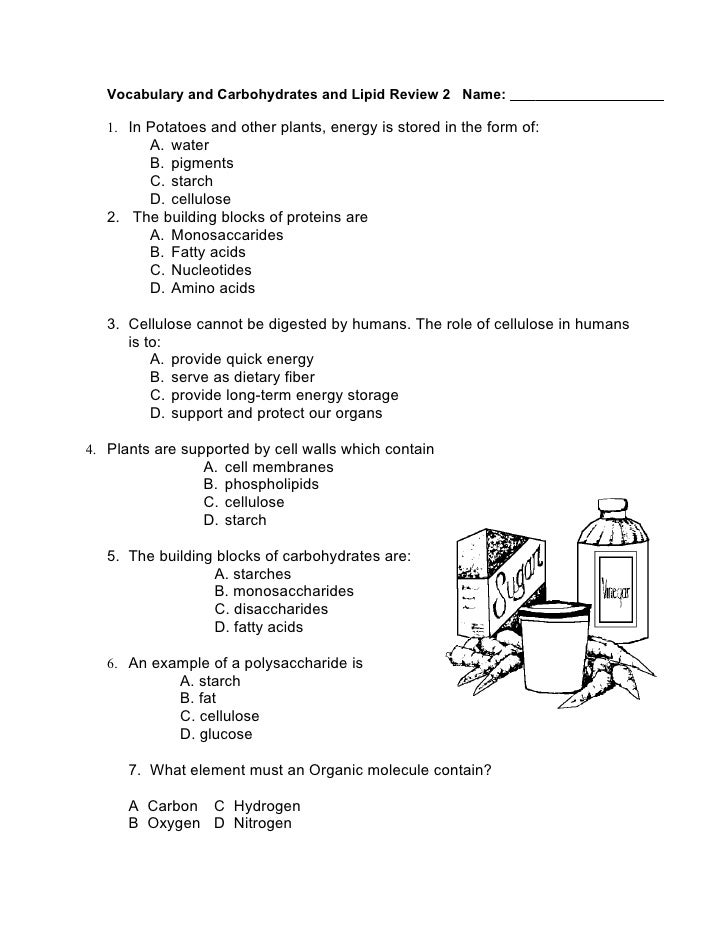


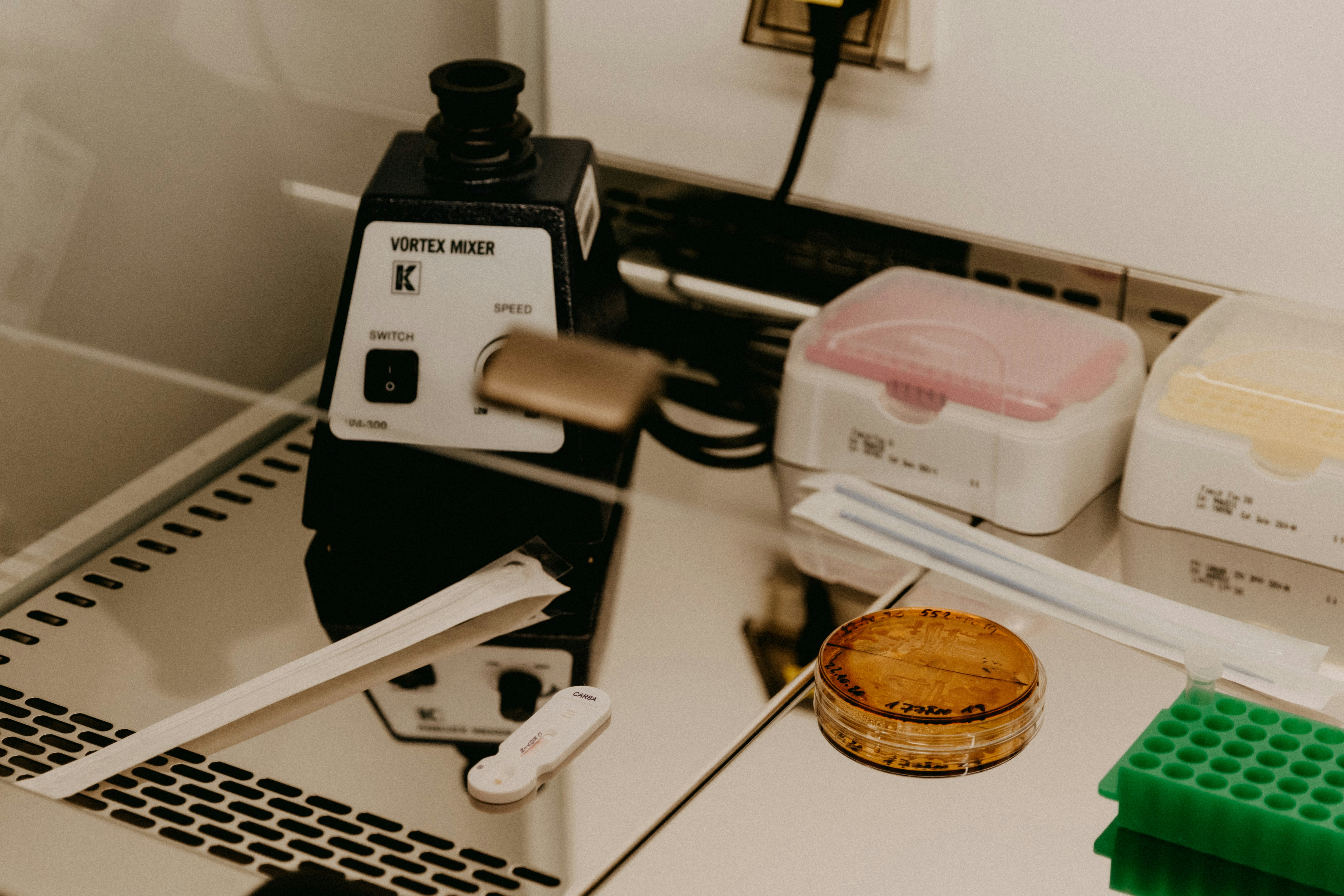


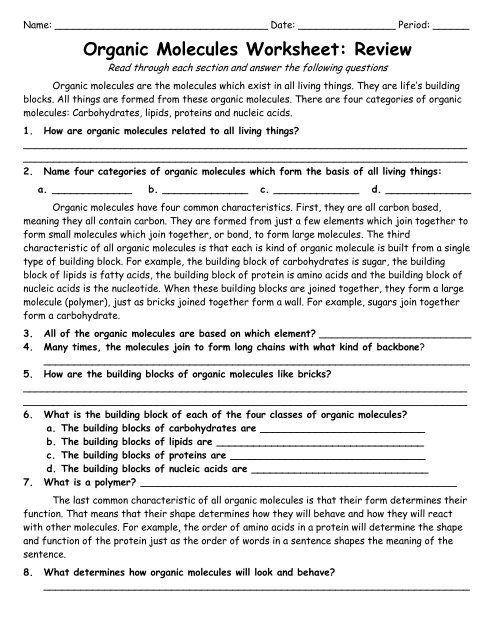


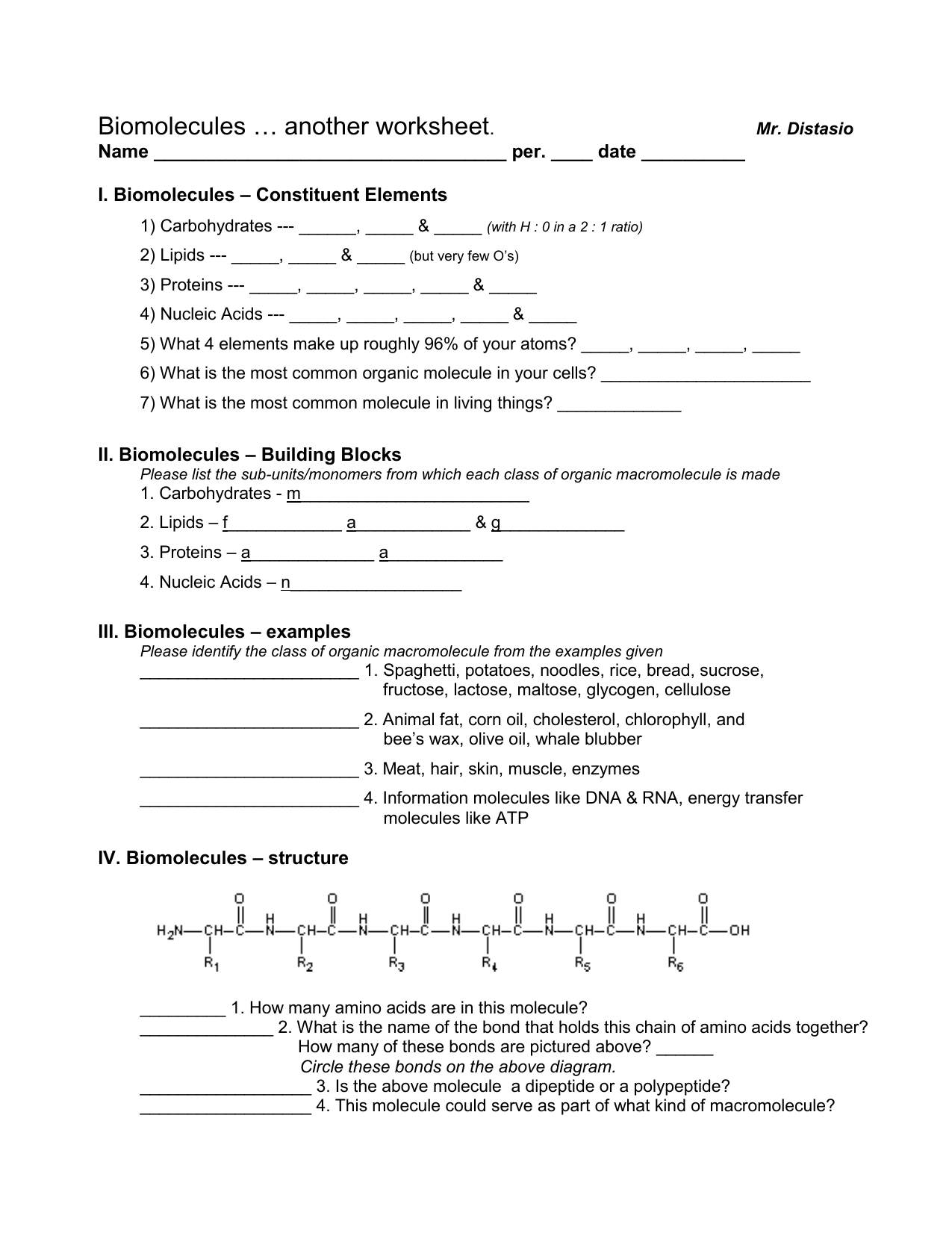
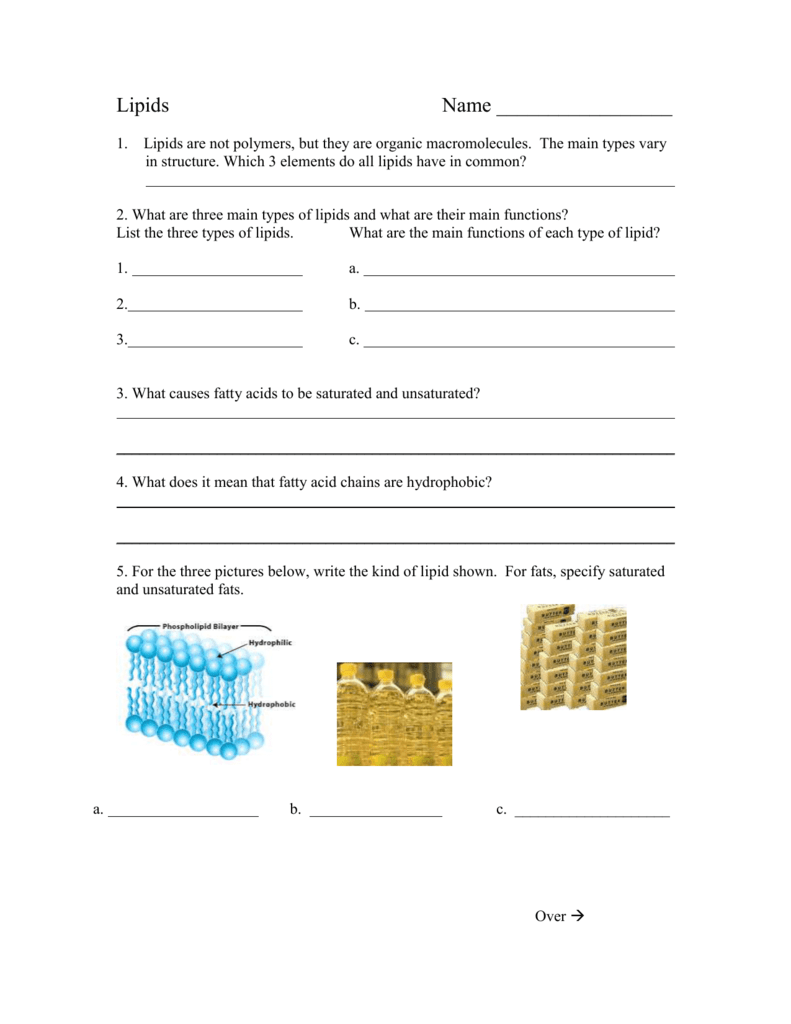
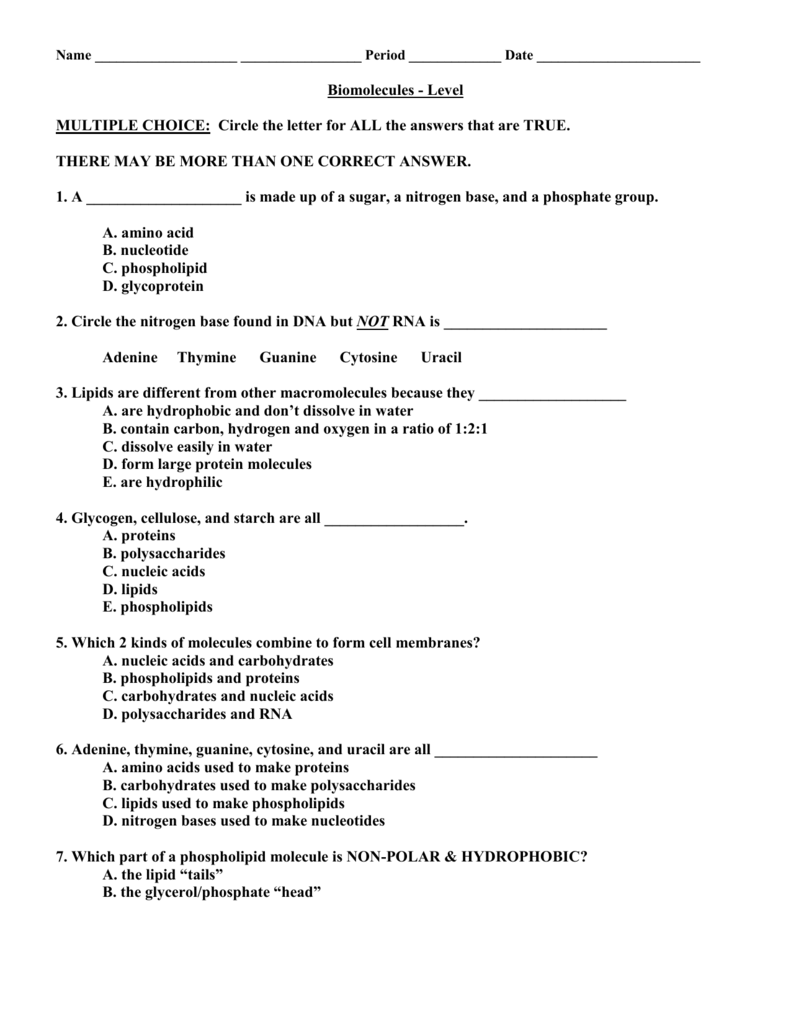
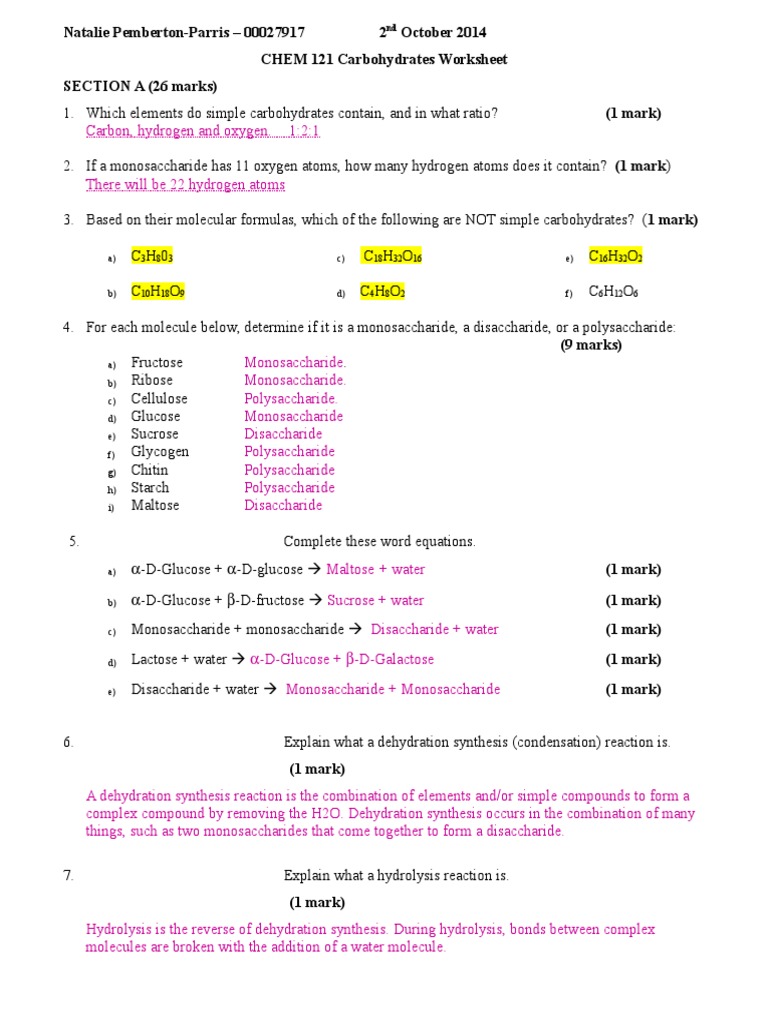


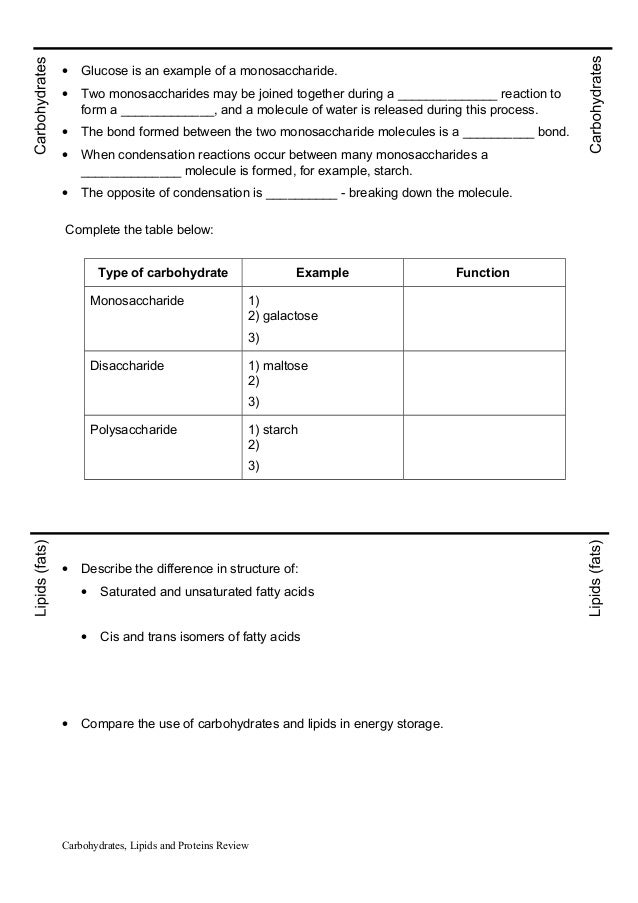
0 Response to "41 chemistry of fats and proteins worksheet answers"
Post a Comment